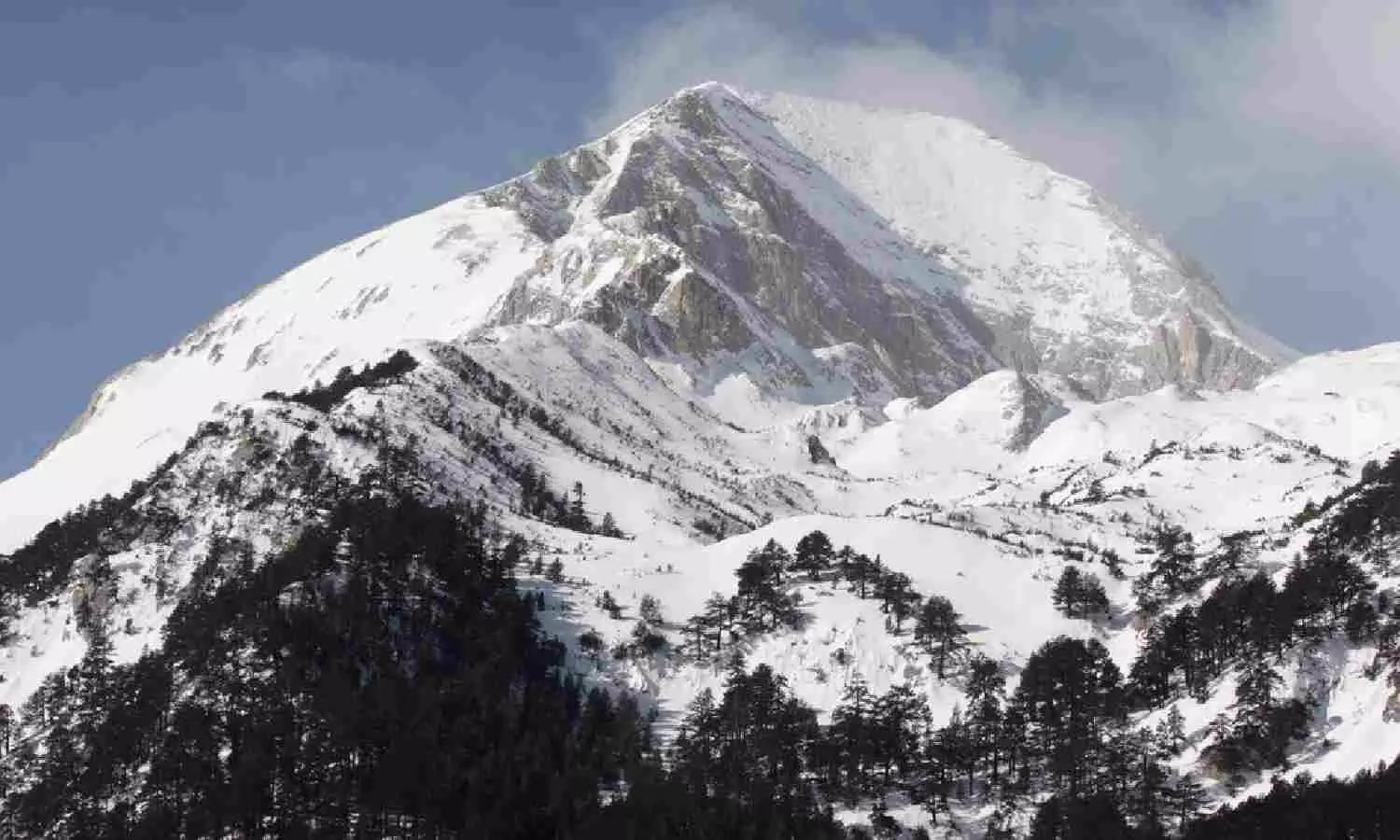
Katherine Kornei
A rumble, a deluge of snow and then silence — avalanches can be deadly, but they often leave behind little enduring evidence of their passage. Now, researchers have turned to tree rings to reconstruct records of avalanches past.
By analyzing the wood of hundreds of living pine trees near a ski resort in Bulgaria, a team of scientists found evidence of dozens of large avalanches that struck the area over two centuries. Understanding the frequency of potentially destructive avalanches can inform risk-management efforts and land-use planning, the researchers suggest. They published their results in the journal Dendrochronologia in June.
The Pirin Mountains in southwestern Bulgaria are home to old-growth forests of pine and fir trees. Many of the trees have been standing for centuries, but some have steeply leaning trunks while others bear conspicuous scars such as broken branches.
“They have certain signs that they were damaged in the past,” said Momchil Panayotov, one of the authors of the study and a dendrochronologist at the University of Forestry in Sofia, Bulgaria. That damage, many researchers believe, was inflicted by avalanches. The mechanical impact of snow rushing downslope can severely damage a large tree and even uproot it entirely. But visible damage doesn’t reveal when exactly an avalanche occurred, which is important for reconstructing records of the dangerous events. To determine when and where avalanches have occurred in the Pirin Mountains, Dr. Panayotov and Nickolay Tsvetanov, also an author of the study and a dendrochronologist at the University of Forestry, turned to tree rings.
Trees that experience an avalanche develop telltale signs in their rings, Dr. Panayotov said: “The survivors keep the record.” In 2020 and 2021, Dr. Panayotov, Dr. Tsvetanov and several students collected samples of wood from hundreds of pine trees in the Pirin Mountains that had signs of damage.
The team focused on three known avalanche corridors in the Bunderitsa valley, home of the Bansko ski resort. The researchers used an instrument called an increment borer to manually extract pencil-width cores from each living tree. Back in the laboratory, Dr. Tsvetanov dried the cores, mounted them in wooden holders and then sanded them down to reveal individual rings. “It’s a very long process,” he said.
The team then compared those tree-ring records with sequences of rings obtained from nearby undamaged trees. That cross-dating allowed the researchers to pinpoint the timing of unexpected features like suppressed growth, scars and missing rings.
“Trees are amazing recorders of past disturbances, including geomorphic hazards such as snow avalanches,” said Allyson Carroll, a dendrochronologist at California State Polytechnic University, Humboldt, who was not involved in the research.
Dr. Panayotov and Dr. Tsvetanov found evidence of avalanches that took place as far back as the 1600s. But definitively concluding that an avalanche occurred that long ago is challenging, Dr. Panayotov said, as relatively few avalanche-affected trees survive for centuries. The team therefore opted to focus on more recent avalanches.
The researchers inferred that over 20 large avalanches had occurred since the mid-1800s. Some of those events can be linked to historical records — for instance, the avalanche that appears in tree rings dating to 1963 is probably a documented event that occurred on Feb. 12 of that year. But other avalanches seemingly rolled downhill into oblivion. “We don’t have written histories of these events,” Dr. Panayotov said. “We can only rely on tree rings.”
By analyzing the spatial positions of the affected trees, the researchers could also estimate the approximate size of each avalanche. For example, they found that the avalanche that occurred in 1969 was unusually large; it reached high up one of the corridors’ banks. The team also noted that avalanches struck across all three corridors in 1963 and across two corridors in 1931, 1987 and 1996. “There was some specific meteorological situations that favored big avalanches in those years,” Dr. Panayotov said, like strong storms in the wintertime.
But reliably predicting that avalanches are more likely in certain climatic conditions will require more data. “You need time series that reach farther back in time to get good correlations between climatic conditions and avalanches,” said Markus Stoffel, an environmental scientist at the University of Geneva who was not involved in the research.
Dr. Panayotov and Dr. Tsvetanov hope that their results will contribute to keeping winter-sports enthusiasts safe. Both researchers have a vested interest: Dr. Tsvetanov is a snowboarder, and Dr. Panayotov is a skier who participates in mountain rescue efforts and helps oversee avalanche education and safety at the Bansko ski resort. “I’m a regular over there,” he said.

